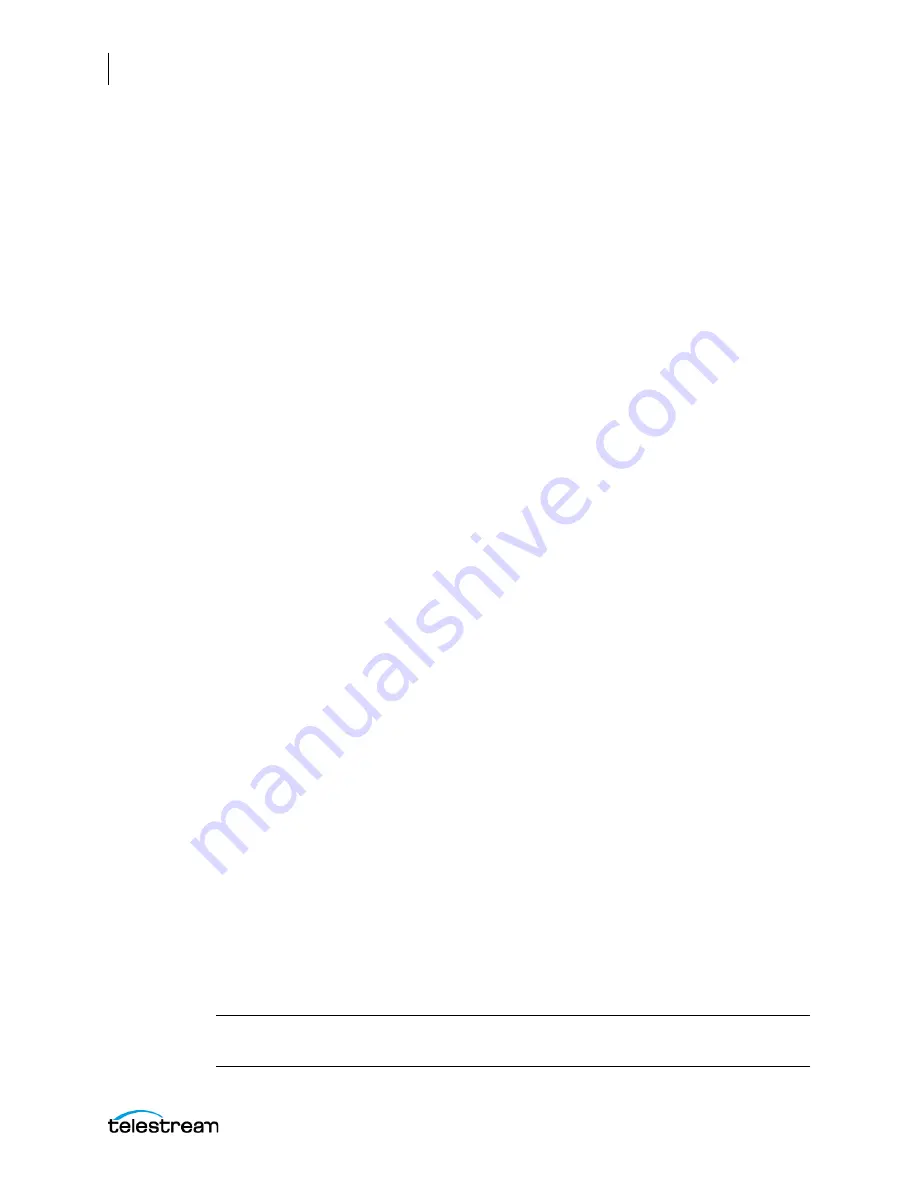
Creating Capture & Tape Action Workflows
Creating and Activating the Tape Action Workflow
132
Lightspeed Live Capture User Guide
You must create one or more MP4 secondary outputs when
Allow Secondary Output to
be Disabled
is selected, in order to have the option to enable and create a secondary
output in the Tape Capture web app.
Is Output Stitched
. When checked, enables the ability to detect if an output is a
stitched type, or not. Select or create a variable to generate, which is used in a
downstream action to make the decision to select the clip when the variable is True.
(Typically a Decide action is used downstream for the selection, then other actions for
further processing.)
Primary Configuration
. When checked, specifies the name of the primary
configuration, in the selected text variable for use in downstream actions. This string is
entered by you in the output Config Name field.
Secondary Configuration
. When checked, specifies the name of the secondary
configuration, in the selected text variable for use in downstream actions. This string is
entered by you in the Tape action output Config Name field.
Time Code Burn-in Filter
Check to enable this filter and configure it. The Time Code Burn-in filter writes the
current value of the time code into the video frame at the specified location and font
size, typically for use in proxy files.
Controls with a green Browse button can be specified dynamically, on a job-by-job
basis by assigning a variable whose value has been set in an upstream action.
X Position
. The X position of the top-left of the timecode in the output video frame.
The range is from 0 to 4096 pixels.
Y Position
. The Y position of the top-left of the timecode in the output video frame.
The range is from 0 to 2160 pixels.
Font Size
. Sets the font size of the timecode. The range is from 6 to 120 pixels.
Text Color
. Sets the text color of the timecode. The default is black. You can enter
simple color names, such as red, green, or white. Or enter a color hexadecimal code
such as #0000DDFF, which is dark blue. The "FF" characters in this example specify the
opacity, and are optional. When these characters are not included the text is
completely opaque (no transparency). The pound sign (#) must be included with the
hexadecimal code. When a color entry is not valid, the black default is used.
Background Color
. Set the color of the area behind the timecode. The default is white. You
can enter simple color names, such as red, green, or blue, or enter a color hexadecimal code
such as #0000DD, which is dark blue. The pound sign (#) must be included with the
hexadecimal code. When a color entry is not valid, the white default is used.
Timecode Transparency
. The opacity of the timecode. 1.00 is fully opaque, or 100 per
cent opacity, 0 is transparent.
Note:
The burned-in Timecode will always represent the actual input timecode being
used by the Input Source.






























